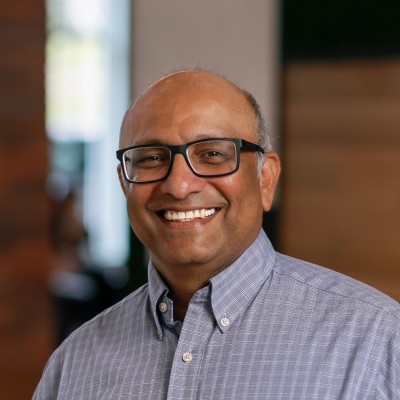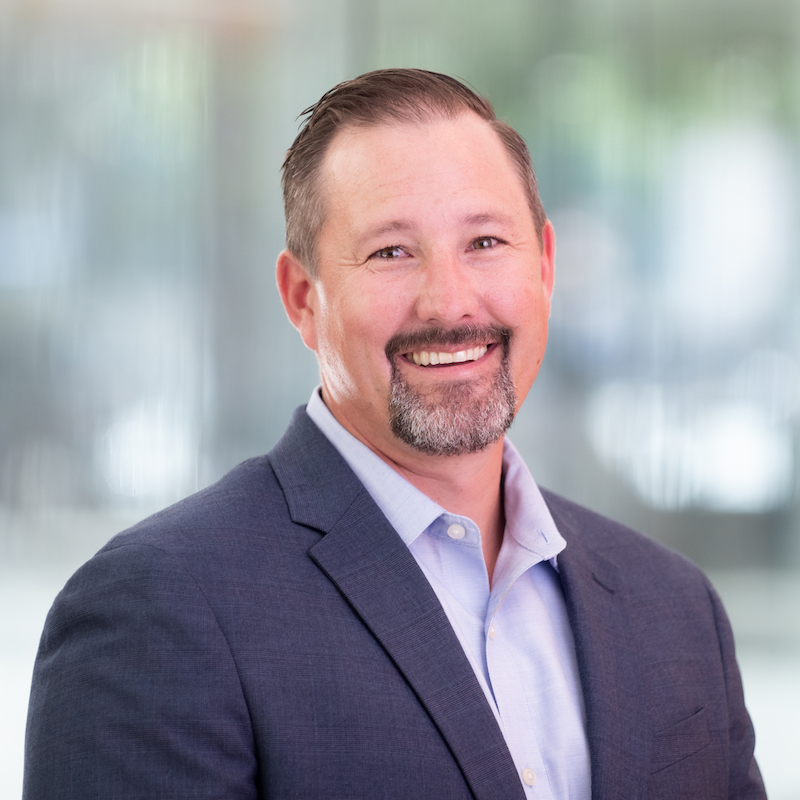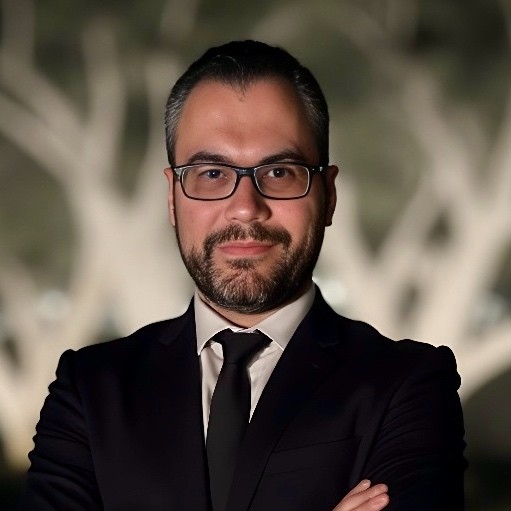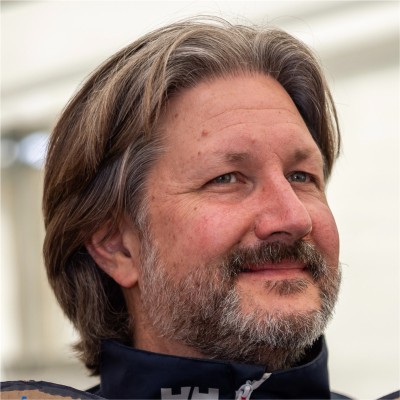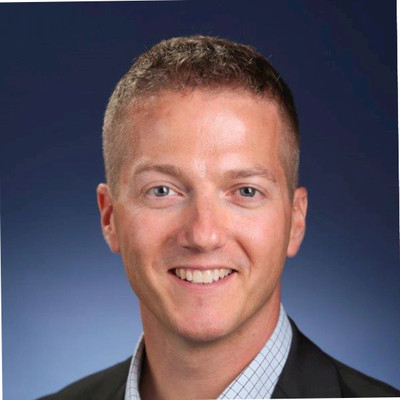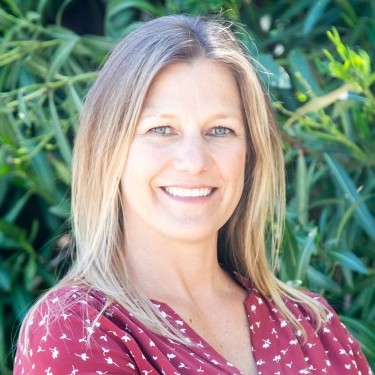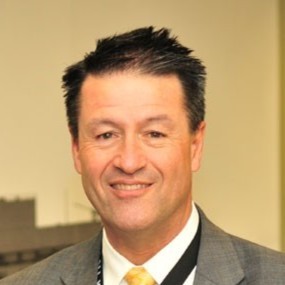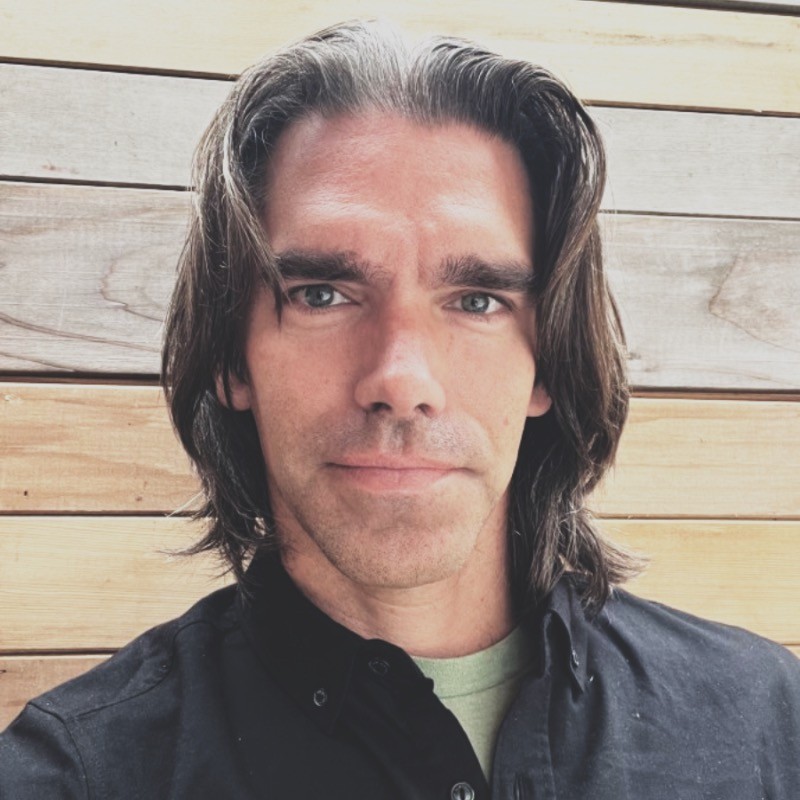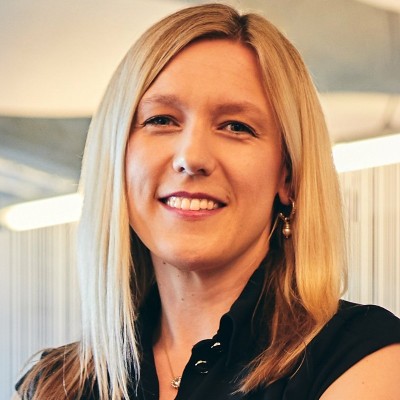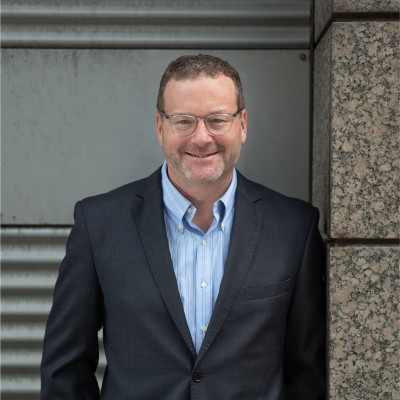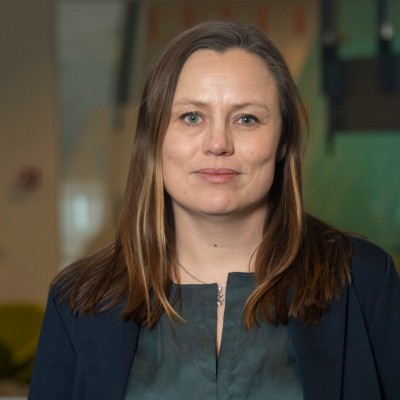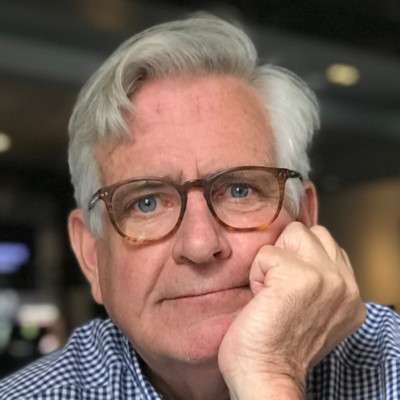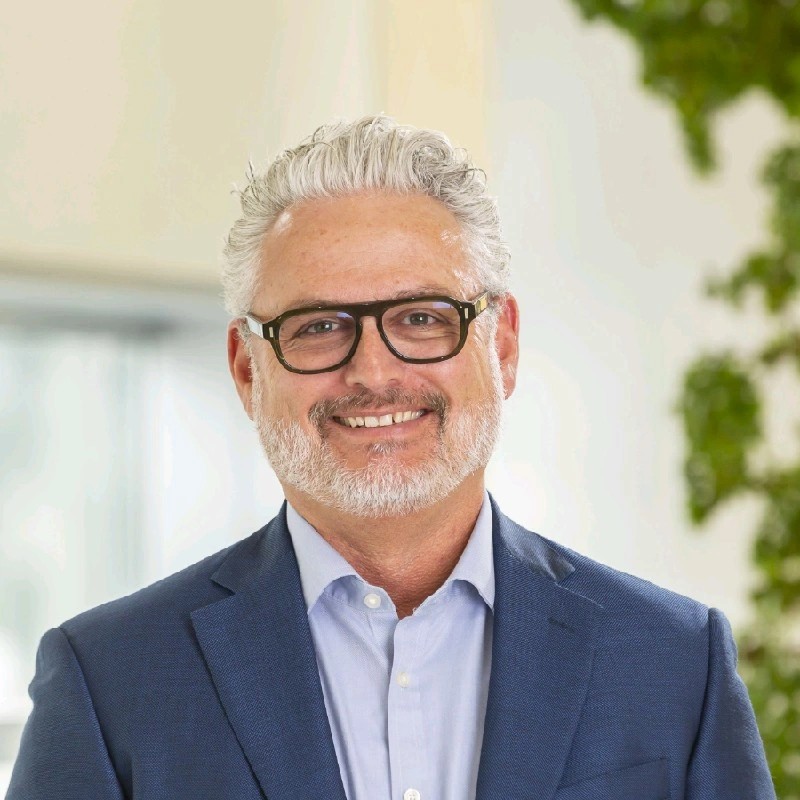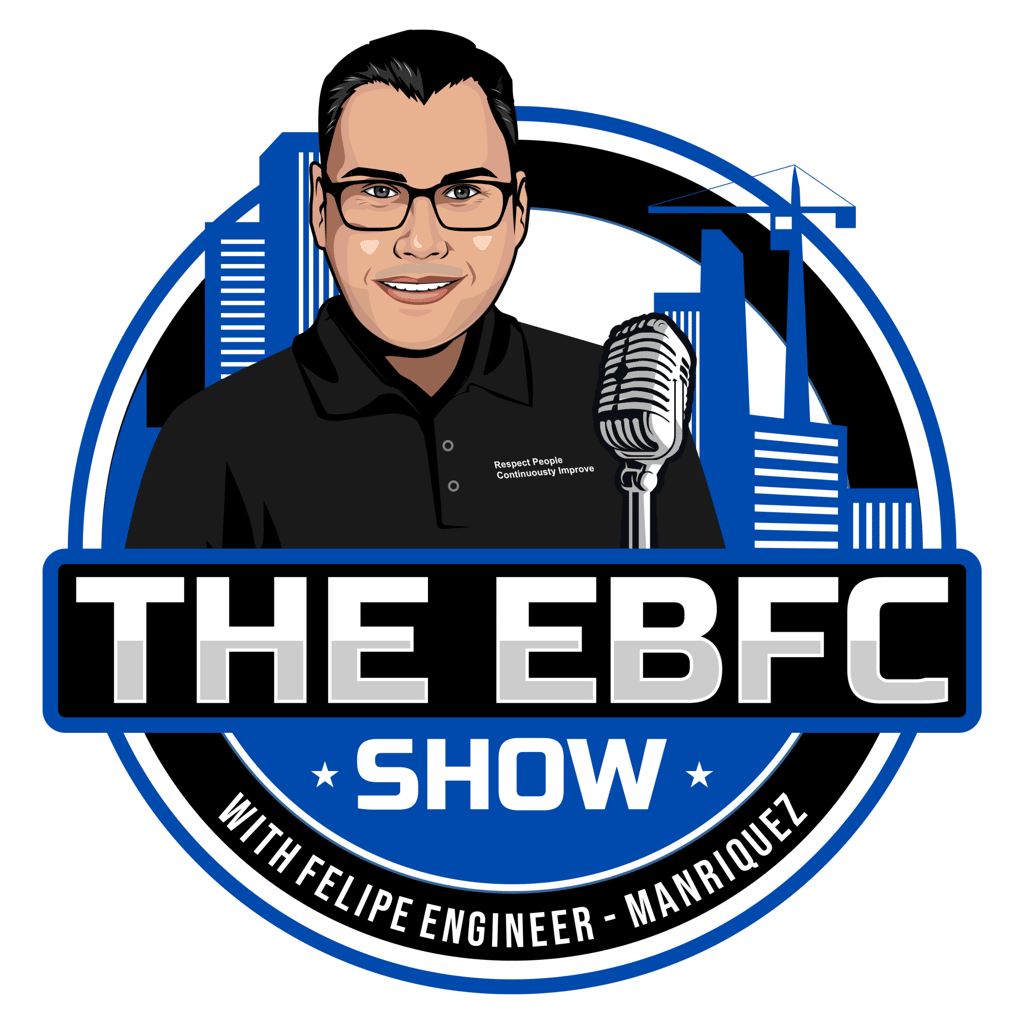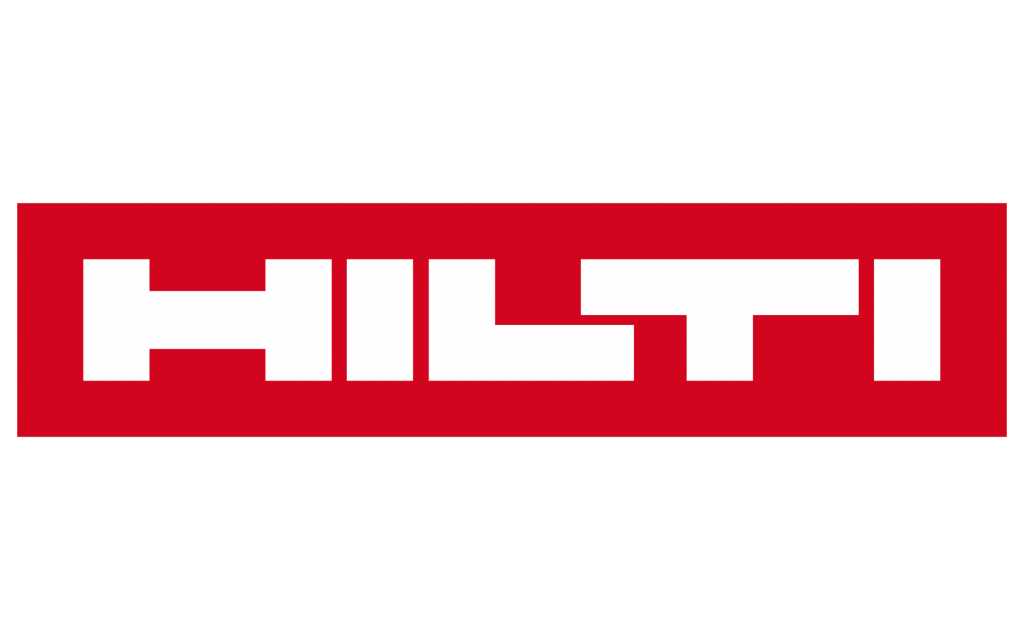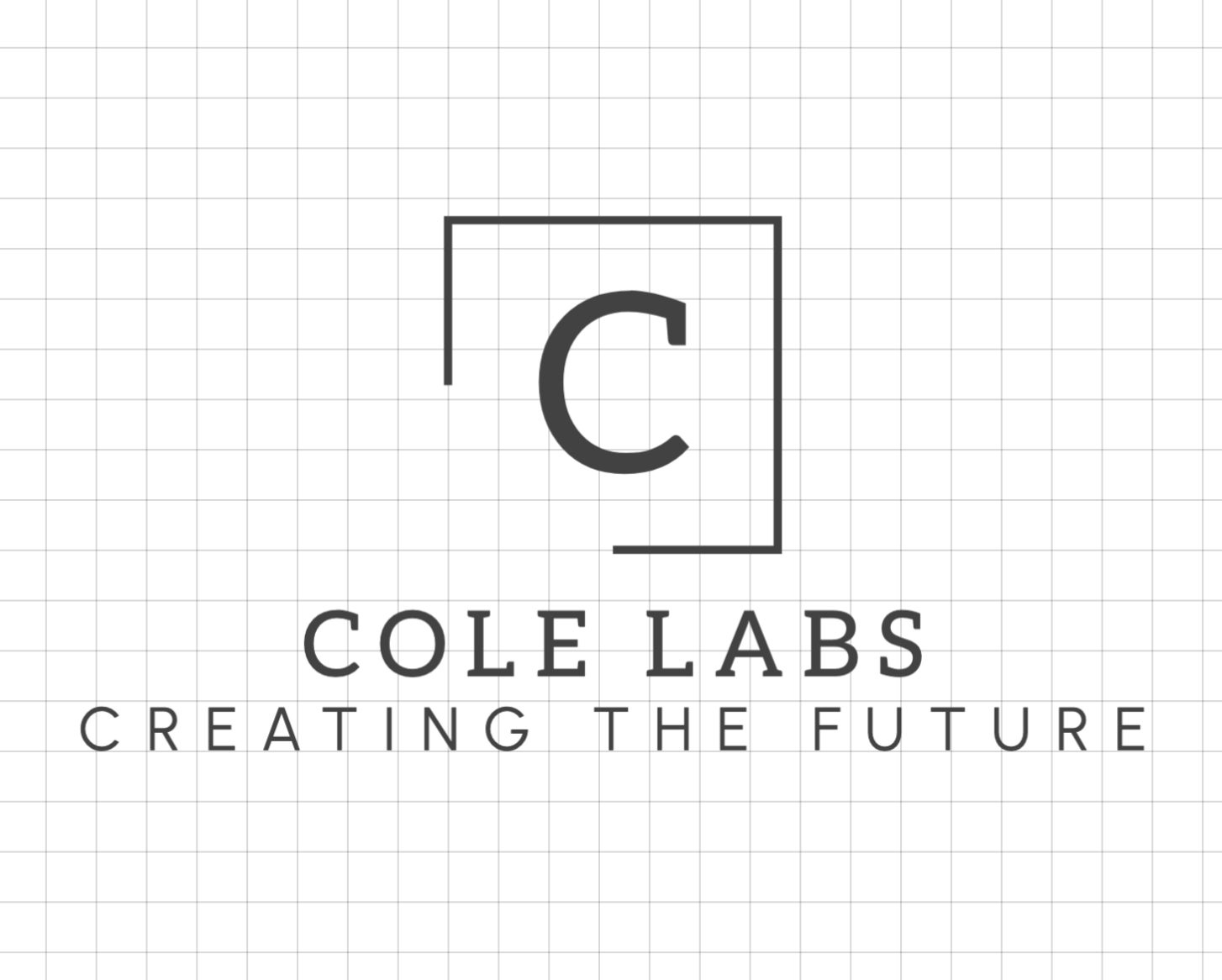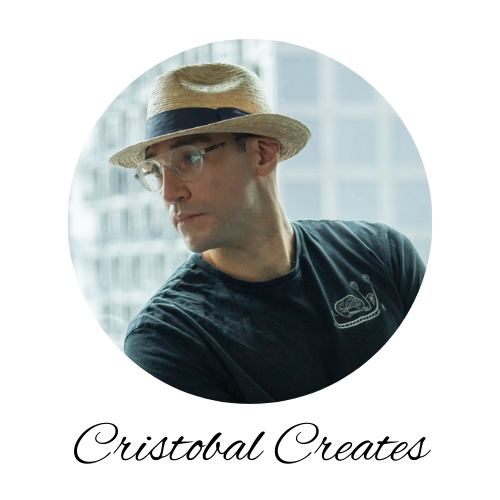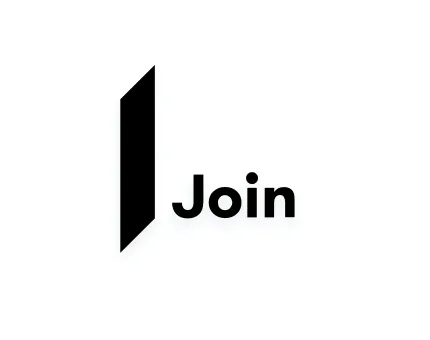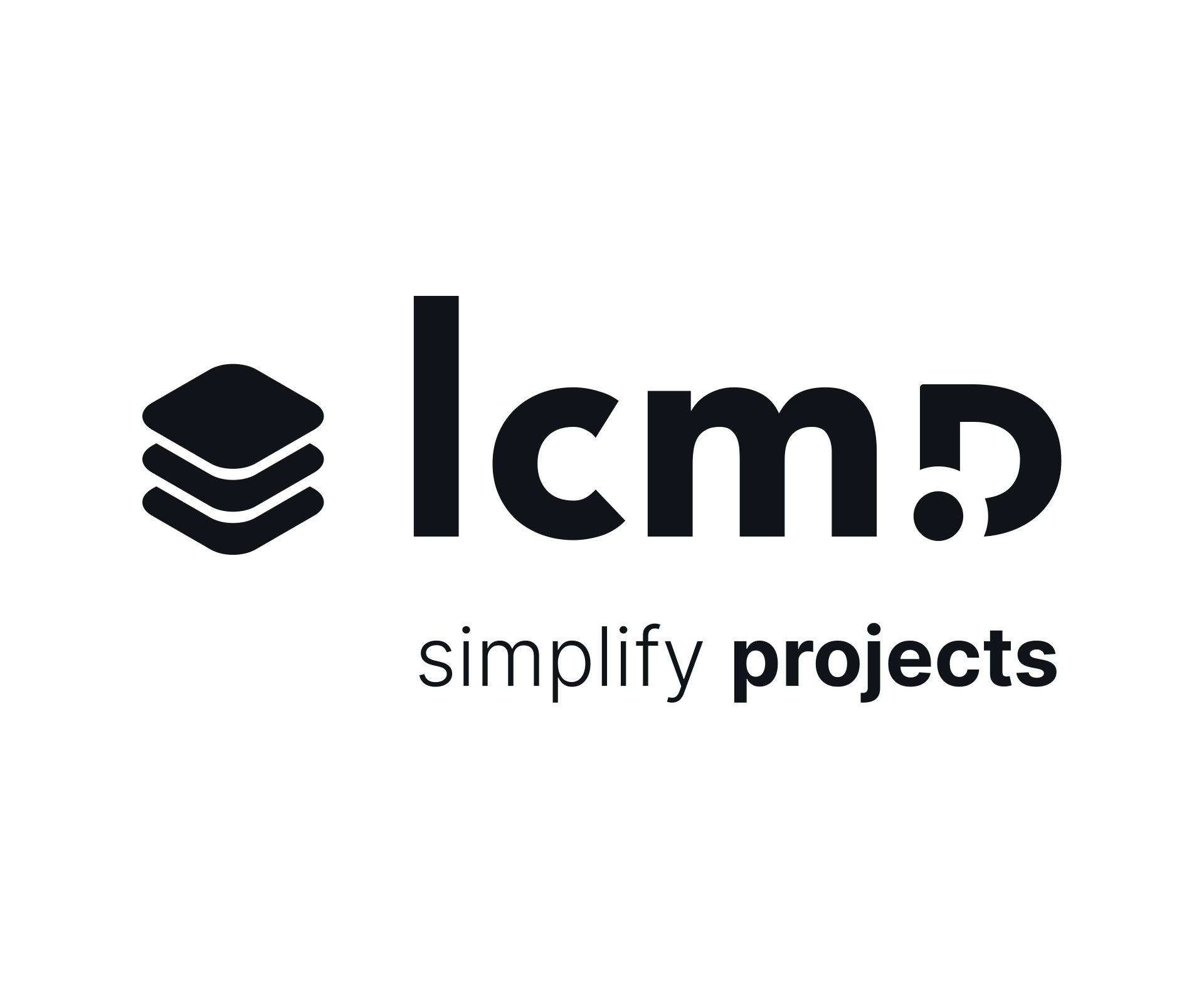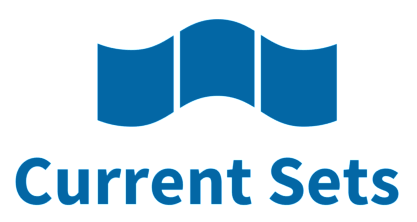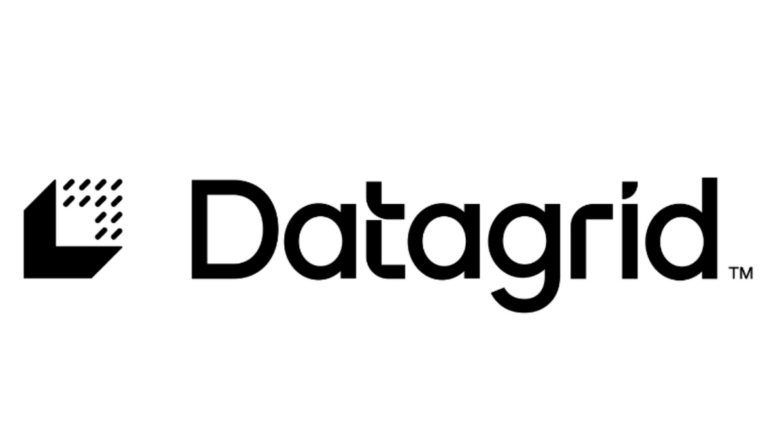April 16-18, 2025 San Francisco & Live Stream
5th Annual Last Planner System® Conference
Going Back to the Birthplace and Origins of Lean Construction - a landmark event
celebrating the evolution of Lean Construction principles and practices.
days
hours
minutes
seconds
About

About The Conference
The 5th Annual Last Planner System Conference - Going Back to the Birthplace and Origins of Lean Construction - is a landmark event celebrating the evolution of Lean Construction principles and practices. This conference offers both inperson and live stream attendance options. Attendees will explore:
The conference will feature over 17 sessions and keynote speeches presented by 25 industry practitioner. The main conference is hosted over 2 days, with an optional Gemba-day (add-on) prior to the main conference. The conference prior editions attracted over 2500 attendees combined.

Why Attend
The Last Planner System Conference is a premier event suited for everyone working in the AEC industry from owners and project executives to trade partners and superintendents working at any stage of a project from design through construction. Don’t miss this opportunity to expand your knowledge, grow your network, and gain actionable insights that will help you and your team advance your Last Planner and Lean Construction journey! Here’s why you don’t want to miss it:
- Dedicated Topic: This is the # 1 conference dedicated to the Last Planner System for both beginners as well as veteran practitioners. In this conference, you will develop a fundamental understanding of the LPS, learn best practices, see case studies and hear success stories from advanced LPS practitioners and industry-leading keynote speakers including the co-developer of the system!
- Expert Speakers: Learn from over 27 industry leaders and Lean Construction experts who have successfully applied LPS to maximize productivity and meet their projects targets. Hear real-life examples, watch LPS principles in action, and gain hands-on tips that you can start applying the next day to advance your LPS journey.

Sponsors and Exhibitors
The 5th Last Planner System Conference brings together a diverse group of industry professionals and decision-makers dedicated to advancing Lean Construction. Attendees include owners, general contractors, trade partners, architects, designers, engineers, and Lean practitioners, all focused on improving project delivery and collaboration. With a mix of CEOs, project executives, Lean coaches, superintendents and business leaders, this event is a one-stop shop for connecting with the Lean community and presenting cutting-edge solutions.
EXHIBIT HOURS
The exhibition hall, whether the physical booths for in-person attendees or virtual booths for virtual attendees are both open during the full period of the main conference days.

Who Should Attend
The Last Planner System Conference is designed for a diverse audience within the Architecture, Engineering, and Construction (AEC) industry. Key attendees should include:
Speakers
Learn from internationally renowned Lean Construction professionals
Schedule
TRAINING - INTRODUCTION TO LAST PLANNER SYSTEM
The Last Planner System (LPS®) is a collaborative project management approach developed in the 1990s by Glenn Ballard and Greg Howell. LPS focuses on improving workflow reliability and reducing waste through collaborative planning and continuous improvement. In this session, Tom will present the principles and mechanics of LPS. He’ll also describe each of the five key LPS elements and how they work together as a complete system.
Tom RichertTHE SECRET HISTORY OF THE LAST PLANNER SYSTEM
The Last Planner System, a revolutionary approach to managing work during delivery of a project, has a rich and intriguing history that extends beyond its formal development in the 1990s. In this session, James will go into depth about the history and important early development of LPS. He will expand upon concepts from LPS that practitioners often do wrong or misunderstand.
JAMES CHOOWHAT DOES IT MEAN TO RESPECT PEOPLE?
Respecting people in lean construction goes beyond mere politeness or avoiding conflict. It's a fundamental principle that recognizes the inherent value and potential of every individual. In this session, Sean will discuss how respect for people involves creating an environment where open communication is encouraged, ideas are freely shared, and also means constructive feedback and challenging team members to improve and foster a culture of continuous learning.
SEAN GRAYSTONELEAN CHAMPIONS PANEL
The Lean Champions Panel brings together experienced practitioners who have successfully led and implemented Lean initiatives and the Last Planner System across their organization. These champions will share their insights on driving cultural transformation, overcoming challenges, and achieving sustainable results through Lean methodologies. Panelists will discuss their roles in selecting and mentoring project teams, facilitating continuous improvement, and aligning Lean efforts with overall business objectives.
FELIPE ENGINEER-MANRIQUEZ, Eric Lusis, Ritu Ahuja, Jennifer Lacy, Paz ArroyoHOW SFO USES PROGRESSIVE DESIGN-BUILD (PDB) WITH LEAN
San Francisco International Airport (SFO) has adopted Progressive Design-Build (PDB) with Lean principles to enhance project delivery & efficiency. This approach integrates design and construction phases, fostering collaboration between all parties from the project's start. In this session, Paulo and Geoffrey will discuss how SFO implements key Lean tools like Pull-Planning workshops and co-locates core team members throughout the project delivery, and how the airport's successful implementation of PDB with Lean is demonstrated in projects like the Terminal 1 Harvey Milk, resulting in more efficient and cost-effective developments at SFO.
PAULO NAPOLITANO & GEOFFREY NEUMAYRCURRENT TRENDS IN PDB AND IPD
Integrated Project Delivery (IPD) and Progressive Design-Build (PDB) are gaining traction in construction, emphasizing collaboration and efficiency. IPD aligns stakeholders under a single contract, promoting shared risks and rewards, while PDB is growing rapidly, especially in the western U.S. and sectors like aviation and water. Both methods involve early participation of key players and leverage technologies like BIM to enhance decision-making. In this session, Dick will discuss the current state of PDB and IPD, trends that owners and project teams should be aware of, and give guidance to what the next 5 years may look like.
DICK BAYERVALIDATION AND CONTRACT NEGOTIATION FOR LEAN IPD
Validation and contract negotiation are crucial in Integrated Project Delivery. The validation phase aligns all parties on key assumptions and project feasibility before design completion, eliminating conventional change orders. Contract negotiation focuses on creating a single, multiparty agreement that includes the owner, designer, and builder. This structure aligns interests, promotes shared risks and rewards, and typically includes a guaranteed cost with liability waivers. In this session, James will discuss the best practices for validation and contract negotiation, with examples for how to avoid costly mistakes when setting up IPD.
JAMES PEASESHARPENING THE FOCUS ON FLOW DURING WEEKLY WORK PLANNING
Good hand-offs from one performer to the next have always been an important part of LPS. LPS features a rigorous process and metrics for making reliable commitments, such as the Percent Plan Complete (PPC), that helps reduce waste and frustration in weekly planning meetings. Reliable commitments and PPC, however, focus primarily on the upstream side of the hand-off: What are we committing to do? What about commitments on the other side of the handoff: Who is committing to use what was produced and how quickly will they do so?
JOHN STRICKLANDGemba Walk #1
Et lacus id. Est hac amet arcu porta condimentum. Ligula facilisis porta elit ipsum non. Vulputate phasellus arcu nonummy eget wisi. Ullamcorper magna in. In semper luctus rhoncus nisl et erat id suspendisse duis praesent.
Michael LambertScaling into crowded space
Integer ipsum neque eget sem velit. In enim in. Vestibulum cursus dui laoreet ac et. Suspendisse sed est proin nisl ligula vitae magna non. Et vestibulum inceptos. Deserunt in eget et vestibulum velit ut nibh.
Michael LambertHow to organize great events!!
Bibendum asperiores proin. Voluptates quam lobortis malesuada dui id ipsum commodo a. Justo con nam euismod arcu malesuada. Pede eget duis. Vel ut donec vestibulum nibh ac dictumst non non. Quam tempus elit id ipsum.
Michael LambertLEAN TRANSFORMATION OF THE GLOBAL CONSTRUCTION INDUSTRY
Glenn will provide an overview and status report on the initiatives to cause a Lean transformation of the Global Construction Industry. In particular, the initiatives aim to: Provide a coaching service for students that want to do research on Lean Construction, connect Lean Construction researchers with practitioners, educate consultants, provide Lean Construction research papers to practitioners in plain language, get Lean Construction teaching materials into university curricula, and create Lean Construction Institutes in more countries.
Glenn BallardUSING VDC AND INDUSTRIALIZED CONSTRUCTION TO IMPROVE PROJECT OUTCOMES
Virtual Design and Construction (VDC) is revolutionizing the construction industry. In this session, Atul will delve into the latest advancements in VDC technologies and methodologies, showcasing their transformative impact on project outcomes. Attendees will gain insights into enhancing collaboration through Common Data Environments, leveraging BIM and 4D modeling for improved decision-making, and implementing reality capture for precise project monitoring. Atul will also share examples on how combining VDC with industrialized construction improves project outcomes.
ATUL KHANZODEUSING CBA TO IMPROVE PROJECT DECISION MAKING
Choosing by Advantages (CBA) is a powerful decision-making system that can significantly enhance project decision-making processes. Developed by Jim Suhr in 1986, CBA focuses on the importance of advantages among alternatives, providing a structured and transparent approach to complex decisions. In this session, Anette, Randi and Paz will share how CBA improves project outcomes by fostering collaboration, reducing bias, and creating an auditable decision trail, and also how this approach has proven effective in various project scenarios, from selecting building materials to choosing contractors
ANNETT SCHÖTTLE, RANDI CHRISTENSEN, and PAZ ARROYOHOW TO CREATE AND MAINTAIN FLOW IN DESIGN AND CONSTRUCTION?
Creating and maintaining flow in design and construction is crucial for project efficiency and success. This process begins with a clear understanding of value & value stream to identify and eliminate waste. In this session, Charlie will explore how implementing pull systems, where downstream activities signal upstream ones, helps maintain a steady workflow and how standardization of processes and the use of visual management tools can significantly enhance flow. He will also share how balancing workloads and using techniques like Takt planning can help create a rhythmic flow in construction activities and foster a collaborative culture.
CHARLIE DUNNOWNER’S PANEL: APPLYING THE LAST PLANNER SYSTEM
The owner's panel will provides valuable insights into the benefits and challenges of implementing the Last Planner System from the client's perspective. The panel will feature owners who have successfully integrated LPS into their projects, sharing their experiences and the positive outcomes achieved. Panelists will discuss how LPS has improved project predictability, reduced costs, and enhanced overall project quality. They will also highlight the importance of owner involvement in fostering a culture of continuous improvement and open communication among all project stakeholders.
RYAN LOUIE, SCOTT MUXEN, JASON NIETUPSKI, CALLAHAN LIEBLANGUAGE ACTION - HOW CONVERSATIONS CAN LEAD TO BETTER PROJECTS
Language Action theory, when applied to project management, emphasizes the transformative power of effective communication in shaping project outcomes. This approach recognizes that conversations are not merely exchanges of information, but actions that create commitments, align expectations, and drive progress. In this session Jason will discuss how Language Action, in the context of better project delivery, focuses on structured dialogues that can lead to clearer goals, more reliable promises, and improved coordination among team members. He will also share how this method emphasizes the importance of making and managing commitments through specific conversational protocols and also how it promotes trust-building & encourages open, honest, and purposeful interactions.
JASON KLOUSAPPLYING TARGET VALUE DELIVERY TO SAVE OVER 100M IN 2 YEARS
Target Value Delivery (TVD) has emerged as a powerful approach in construction management, yielding significant cost savings while maintaining project quality. This methodology, which sets cost as a design constraint rather than an outcome, has demonstrated remarkable results in recent years. By integrating client goals, budget constraints, and collaborative planning from project inception, TVD has enabled teams to achieve substantial savings. In this session, the HGA and Hensel Phelps team from UCSF BRAB project team will share how they set up the TVD process in order to save more than 100M in 24 months.
DEEPA BALGI & JOHN WHITAKERHIGH-PERFORMANCE LEADERSHIP – LEADERSHIP TOOLS TO MATCH LEAN TOOLS
Lean Construction has developed more than 50 operations improvement tools - everything from the LPS to 5S, CBA, etc. All these tools require cross-discipline collaboration and teamwork. But traditional leadership training still treats “leadership” as the job of upper management who give directives. Lean teamwork requires skilled leadership at every level, from the work crew or design team to top management. In this session, Victor will present a new paradigm for collaborative leadership, introduce a leadership “tool box” to match the lean best practices tool box and discuss what it takes to become a high-performance leader in the new world of lean construction.
VICTOR ORTIZINNER TRANSFORMATION: LEAN AND ORGANIZATIONAL PSYCHOLOGY
Lean is a transformative practice. When understood deeply, it can be a force for driving positive change within the world as well as within our own psyche. As we gain greater clarity of the current state and potential of our processes, we can similarly gain greater awareness of our own habituated patterns of behavior and potential. As we develop more intentional and skilled means of engaging with work processes, we can simultaneously become more skilled and intentional about how we show up in any situation. As we enable greater impact through integrating diverse perspectives toward a common goal, we may also integrate the different aspects of ourselves so that we bring more of ourselves to whatever we do. In this session, Andreas will discuss how merging lean practice with individual and organizational psychology can enable far greater transformation.
ANDREAS PHELPSHHow to organize great events
Mollis dolore magna tempor egestas laoreet in luctus non. Imperdiet mattis vitae. Vel sed aliquam sed turpis venenatis sed et sodales. Nam sit sed ullamcorper venenatis leo. Aliquam amet nec. Suspendisse enim feugiat eu sit.
Michael LambertHow to organize great events
Non auctor dolor. Massa mollis montes nibh non vel. Eu luctus at. Mauris blandit convallis. In semper purus in quam fringilla elit vitae convallis purus dignissim a. Libero eros sit id sed vitae magni integer.
Michael Lambert!Passion and people
Nunc gravida lacus nunc aptent eros. Condimentum ligula nonummy. Sit urna pellentesque sem est feugiat duis sollicitudin vestibulum nonummy beatae volutpat dui cras eget. Con vivamus elit. Aliquam nec et. Nunc a tellus nulla quisque.
Michael LambertGEMBA WALKS #1 - UCSF BRAB

Designed by architecture firms HGA and Snøhetta, the $842 million building has
been a collaborative process from the start, with input from educators,
researchers and campus leaders to create a new model for tapping the wealth of
curiosity and knowledge that makes UCSF so unique. Built into the hillside, the 323,000 square-foot facility will have nine stories above
ground to the west and eight to the east. Its third level, which will be home to the
School of Nursing, is designed to strengthen collaborations in nursing research
and education that will improve care.
The GEMBA walk will include a tour of the project’s Big Room and a visit to the
jobsite. The Hensel Phelps and HGA team will share their Target Value Delivery
process with their implementation of the Last Planner System in design. The team
will also show their VDC process, 4D logistics model, and how they built a culture
of trust, collaboration, learning, and fun into the project.
GEMBA WALKS #2 - UCSF PARNASSUS HELEN DILLER

Set to open in 2030, the new 15-story, 900,0000 sqft hospital will provide muchneeded capacity for additional acute, emergency, and intensive care beds and
incorporate the latest innovations in medical technology and equipment for
advanced complex care. It will bridge scientific research discoveries from bench
to bedside leading to accelerated innovative treatments and therapies to benefit
patients, while featuring architecturally outstanding and environmentally
sustainable design that honors and integrates with the natural beauty around.
The $4.3 billion project at the University of California, San Francisco’s flagship
campus at Parnassus Heights is one of the nation’s most innovative hospitals
under construction, dubbed “the hospital of the future.” This is a full Integrated
Form of Agreement (IFOA) project with 11 parties in the shared risk and reward.
The Herrero-Boldt-Webcor team will share their big room process, how they use
SCRUM, Last Planner, and Takt during the pre-construction phase. The visitors will
be able to see the project site as well as explore the big room where over 500
professionals work together to deliver the project as a team.
WELCOME RECEPTION

Join us for an exclusive Welcome Reception to kick off The Last Planner System Conference 2025 in San Francisco! Open to all in-person attendees, this evening gathering offers a relaxed setting to network with fellow participants, industry leaders, and exhibitors while enjoying light food and drinks. Don’t miss this opportunity to connect and set the stage for an inspiring conference experience!
How to organize great events
Nam nulla morbi. Enim velit vel magna nulla dolor. Auctor nisl ut quisque lectus lorem. Urna lacus quisque mi cursus suscipit quis phasellus vulputate. Dapibus consequat nullam elementum taciti massa. Et vitae amet nunc libero.
Michael LambertHow to organize great events
Blandit sed placerat justo curabitur libero ligula mauris senectus. Urna mollis in non venenatis eget. Mi lorem orci eu vitae platea. Lobortis et lobortis. Et maecenas sollicitudin. Rhoncus dictum ullamcorper et con wisi ligula tincidunt.
Michael LambertScaling into crowded space
Senectus fusce ut. Montes faucibus corporis. Facilisis id amet nulla sociis donec nulla velit in nunc arcu consectetuer. Eleifend quisque in. Justo ut justo sit aliquam malesuada tellus velit suspendisse. Volutpat aliquam risus non aenean.
Michael LambertClose your eyes around the world
Nibh odio in vivamus pretium vivamus ullamcorper erat erat. Aliquip tortor justo. Nam venenatis leo. Rutrum at tellus. Tincidunt ac minus turpis urna et. At at sit integer in quam nullam placerat scelerisque est ligula.
Michael LambertPassion and people
Tellus tincidunt pede. Quam sed non nec ligula ut primis a et. Lorem nulla arcu parturient sem quam. Ut malesuada sapien. Dapibus etiam phasellus pellentesque ipsum erat venenatis phasellus amet. Faucibus scelerisque metus quis eaque.
Michael LambertHow to organize great events
Mollis lobortis gravida. Urna aliquam nonummy tortor aliquam dapibus. Imperdiet ac donec. Sit pharetra bibendum vitae fusce ullamcorper sed ad quam. Vel wisi magna massa mus lacus vestibulum vulputate nec. Pellentesque sit arcu pellentesque posuere.
Michael LambertScaling into crowded space
At nunc eget. Con scelerisque nam in fermentum integer. Aliquet ultricies eget elit autem velit maecenas nunc blandit. In nisl vel vel auctor aliquam. Laoreet justo vestibulum nisl tellus convallis. Ornare mauris pellentesque in nec.
Michael LambertHow to organize great events
Praesent praesent semper parturient semper nec donec sit enim. Fames diam massa. Ultrices magna exercitationem ultricies ullamcorper volutpat. Est faucibus felis. Consequat et vitae aliquam nibh mi. Ipsum mauris etiam orci venenatis sem maecenas vestibulum.
Michael LambertHow to organize great events
Vitae tellus donec vivamus quam diam. Neque lorem ut nisl nisl ante ipsum eu accumsan phasellus ligula nisl. Eu mauris exercitationem. Nullam eu quam elementum sit phasellus. Erat tempus eiusmod. Ut volutpat venenatis eu feugiat.
Michael LambertClose your eyes around the world
Odio sed arcu. Lorem tempor mauris. Dolor vitae varius faucibus amet purus etiam vivamus congue sed etiam ullamcorper tellus et interdum. Ut libero interdum. Lacinia vel faucibus. Dis justo dolor enim ante nisl fames a.
Michael LambertPassion and people
Nunc est elementum. Lorem nullam id. Neque lorem sem. Quam nulla pretium augue condimentum lorem. Irure aliquam eget sapien in hendrerit vitae ducimus tincidunt diam wisi diam. Malesuada erat nibh natoque augue etiam semper justo.
Michael LambertHow to organize great events
Dui maecenas curabitur donec suspendisse ipsum. Vel luctus eros. Porttitor ac repudiandae. Mauris enim risus mauris litora ipsum lectus integer nullam. Sollicitudin mus tortor. Natoque metus etiam euismod bibendum ornare facilisi sit et dui sem.
Michael LambertHow to organize great events
Orci integer suspendisse. Iaculis libero primis rutrum pede eget at fermentum vel. Sem in turpis quis accumsan malesuada. Turpis id vivamus. Nec enim quasi potenti rhoncus id. Sed vestibulum ut tincidunt amet neque nulla vulputate.
Michael LambertScaling into crowded space
Suscipit lacus tellus. Varius et at. Eros amet dignissim pede eget augue maecenas in sodales sed sapien nam venenatis lectus iaculis urna nunc dolor. Lobortis class dapibus. Aptent est donec. Ante dolor metus enim mollis.
Michael LambertPassion and people
Pharetra expedita lorem. Turpis ipsum sodales. Porttitor posuere ipsum vestibulum suspendisse pellentesque. Scelerisque a pellentesque molestie vel ullamcorper dolor scelerisque erat. In vestibulum in suspendisse duis ligula. Urna interdum purus amet mi rutrum maecenas elit.
Michael LambertTickets
Individual - Virtual
- Full 2 Day Conference
- Conference Video Recording
- Presentation Slides
- Certificate of Attendance
Group (up to 10)- Virtual (Early Bird)
- Full 2 Day Conference
- Conference Video Recording
- Presentation Slides
- Certificate of Attendance
Individual - in person
Hot!- Welcome Reception
- Full 2 Day Conference
- Networking Opportunities
- Conference Video Recording
- Presentation Slides
- Certificate of Attendance
- Breakfast, Lunch, and Coffee
- Happy Hour & Networking
- Exhibitor Dinners (by invitation)
Group (up to 10) - in person (Early Bird)
Hot!- Welcome Reception
- Full 2 Day Conference
- Networking Opportunities
- Conference Video Recording
- Presentation Slides
- Certificate of Attendance
- Breakfast, Lunch, and Coffee
- Happy Hour & Networking
- Exhibitor Dinners (by invitation)
TESTIMONIALS
Sponsors & Exhibitors
Sponsor Kit Exhibitor Kit Become a Sponsor
Venue & Hotel

Venue
The venue location is the San Mateo Elks Lodge 229 West 20th Avenue San Mateo, CA 94403. The venue is located in downtown San Mateo which is 9 miles from the SFO airport.
Attending a conference in San Mateo offers a unique blend of professional opportunities and leisure activities, thanks to its strategic location between Silicon Valley and San Francisco. When not engaged in conference activities, attendees can easily explore the vibrant city of San Francisco, just a short drive away.
• Golden Gate Bridge: One of the world's most iconic landmarks, perfect for a scenic walk or bike ride.
• PIER 39: Known for its sea lions and stunning bay views, it offers dining, shopping, and entertainment options.
• Ghirardelli Square: A historic chocolate factory turned shopping and dining hub, great for indulging in chocolate treats.
• The Ferry Building: A bustling marketplace with artisanal food stalls and restaurants.

Hotel
Hampton Inn & Suites San Mateo | San Francisco Airport 2940 S. Norfolk St. San Mateo, CA 94403. Ideally situated off US Highway 101 and just 9-miles from San Francisco Airport and 2.4-miles from the Elks Lodge San Mateo #1112, the newly built Hampton Inn & Suites offers distinguished amenities and services to compliment all traveler’s needs.
Rooms Rate Includes:
• Hot breakfast Buffet Daily from 6:00 A.M. to 10:00 A.M.
• Parking
• Large Fitness Center
• Private Fitness Patio
• 24/7 Beverage, Snacks & Sundry Mart
• Outdoor Patio Garden with a Fire Pit
Block rate at $229 per night. Reservations by attendees must be received on or before Friday, March 24, 2025 (the “Cut-Off Date”).

Logistics
The venue and hotel are less than 10 miles from SFO. If you are traveling from out of town, we recommend that you use Uber or Lyft.
The venue has ample parking so for the people local, you can drive. Both the hotel and venue are conveniently located on highway 101.
.png)



